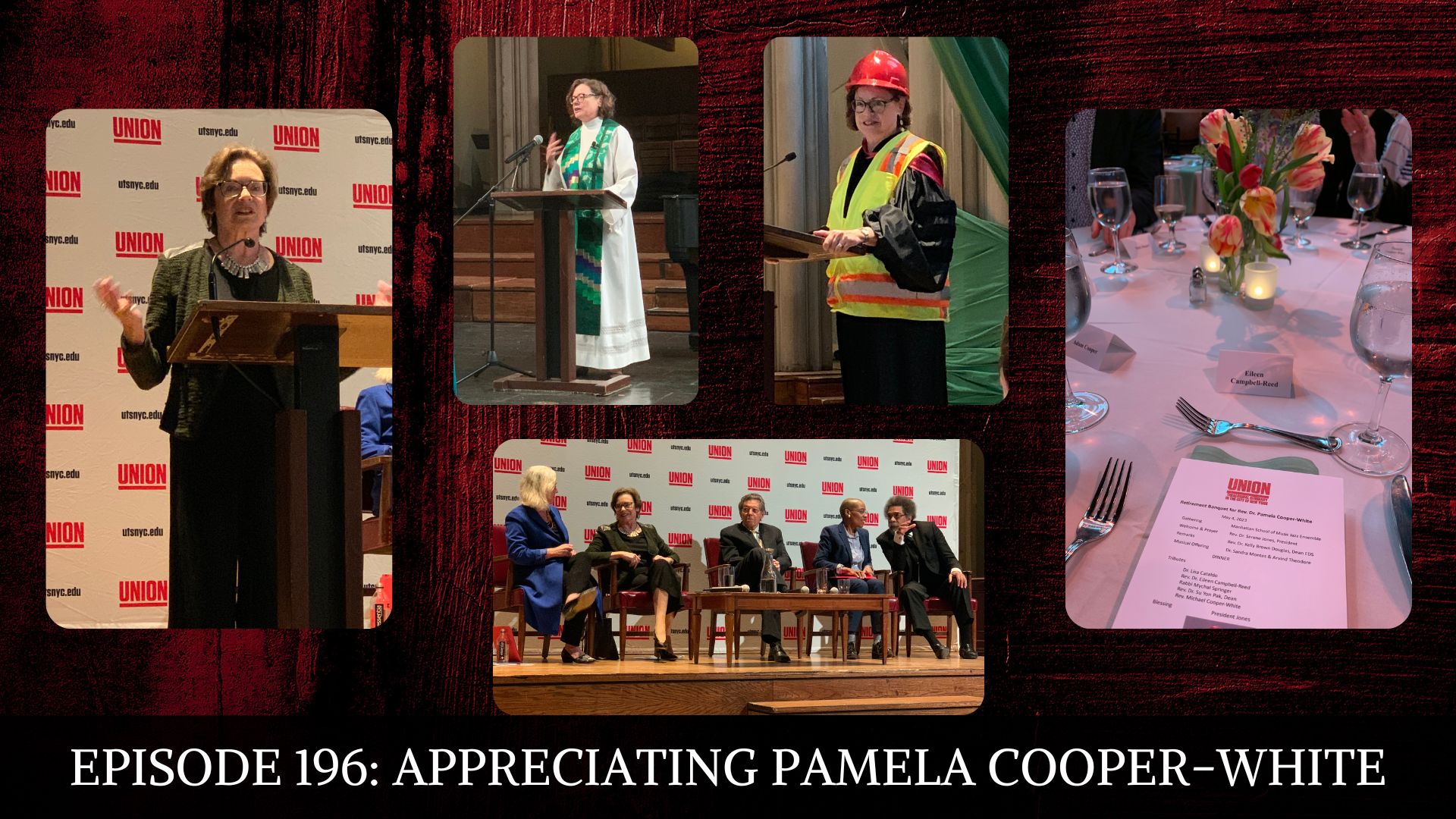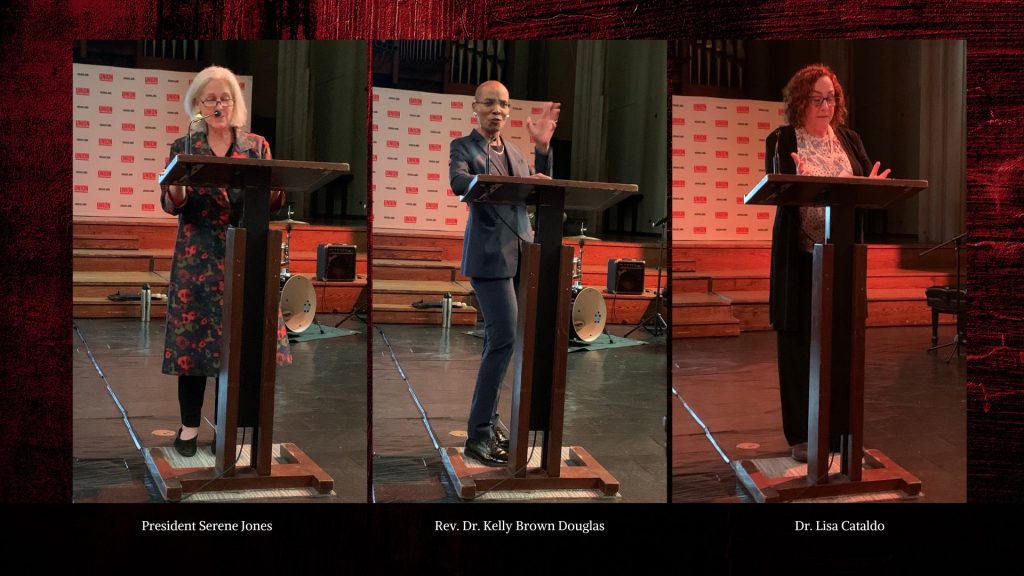Last week I had the joy of appreciating Rev. Dr. Pamela Cooper-White, at her retirement dinner. A wonderful group came together May 4 at Union Theological Seminary to celebrate our friend and colleague.
My task and honor was to reflect on Pam’s contributions to the fields of pastoral theology, care and counseling (PTCC).
Pamela Cooper-White is much more than a contributor to these overlapping fields. She’s an embodiment of these fields. Scholar, practitioner, and priest. Under the umbrella of the practical fields of theological education, there remains a high expectation of expertise in practice as well as scholarly contributions, adding an entire other dimension to pastoral theological work, a larger demand on one’s skill set, and in effect multiple vocations.
Unlike the theologian of Ed Farley’s imagination — one who sits in their office and makes things up — a pastoral theologian needs to be an actor in the work of church or healing arts, chaplaincy or counseling, or at very least coaching, consulting, or nonprofit ministry. Pam does or has done all of these. Not simply in her mind, or addressed by her writing, but in her credentials. In her practice. And in her personhood
Looking at Pam’s narratives of how she came into the vocation of pastoral theologian, one sees that like her well-known theories of multiplicity, Pam stewards a multiplicity of gifts, skills, and identities. She literally took more than one path into this work: music and the arts, work with women experiencing violence, a priestly calling, and training in psychodynamic therapy. Even the guest list of speakers this evening, who will address the different aspects and areas of Pam’s contributions professionally and personally attest to the fact of her multiplicity and variety of gifts.
Meeting Pamela Cooper-White
My first memory of Pamela Cooper-White is in a hotel ballroom at the Society for Pastoral Theology (SPT) meeting in Atlanta, Georgia. She was moving with great energy around the room and handing out surveys about teaching. Specifically she was asking colleagues “what are we teaching about violence against women?” I was still a doctoral student, and I did not have charge of any classes just yet. So, I simply looked at the survey, and I learned from it. This week I found a copy of the survey questions still in my computer while preparing for this appreciation.
In that first strong impression I have of Pam, are the seeds of what I want to identify as her contributions to PTCC. I’ll say a brief word about research, trauma, teaching, publishing, editing and reviewing, and keeping depth psychology on the front burner. There is more I could say, but I was only given a few minutes!
Research
At that first SPT meeting, where I met Pam, she was focused on sharing her research and findings about a survey previously sent to our field. She was presenting about her findings that day. Pam has taken on all kinds of research over the years: qualitative, quantitative, archival, translation, and ethnographic.
She jumps into each new project with the same energy I saw that day, and she typically has a clear aim with each project. And she is as good in the archival library as she is interviewing people about teaching practices, ghost tours, or Christian nationalism. She brings among other things a pastoral lens to each of her research pursuits.
Trauma
Pam has never backed down from her concern with the violence experience routinely by women and children, and immigrants, and people without stable homes or mental health care. Questions about trauma and healing have preoccupied her work from the days early days when she wrote The Cry of Tamar (1995) while practicing a priestly vocation and running a nonprofit. The questions continue to shape her work even in her most recent publications and teaching on Christian nationalism.
Human suffering and redemption take center stage in much of what Pam contributes to her colleagues in pastoral theology, care and counseling.
Teaching
The questions of Pam’s 2004 survey were all related to teaching about trauma and violence against women in pastoral care classes. In that survey she asked about information, books, assignments, guest speakers, and the milieu of the school on this important topic.
Pam has worked hard to design courses that really convey to students both information and practice about how to be trauma informed caregivers — before that term was even in vogue.
While I worked with Pam in her role as Dean, she was always concerned about pedagogy and about supporting the faculty in doing its best work in teaching students.
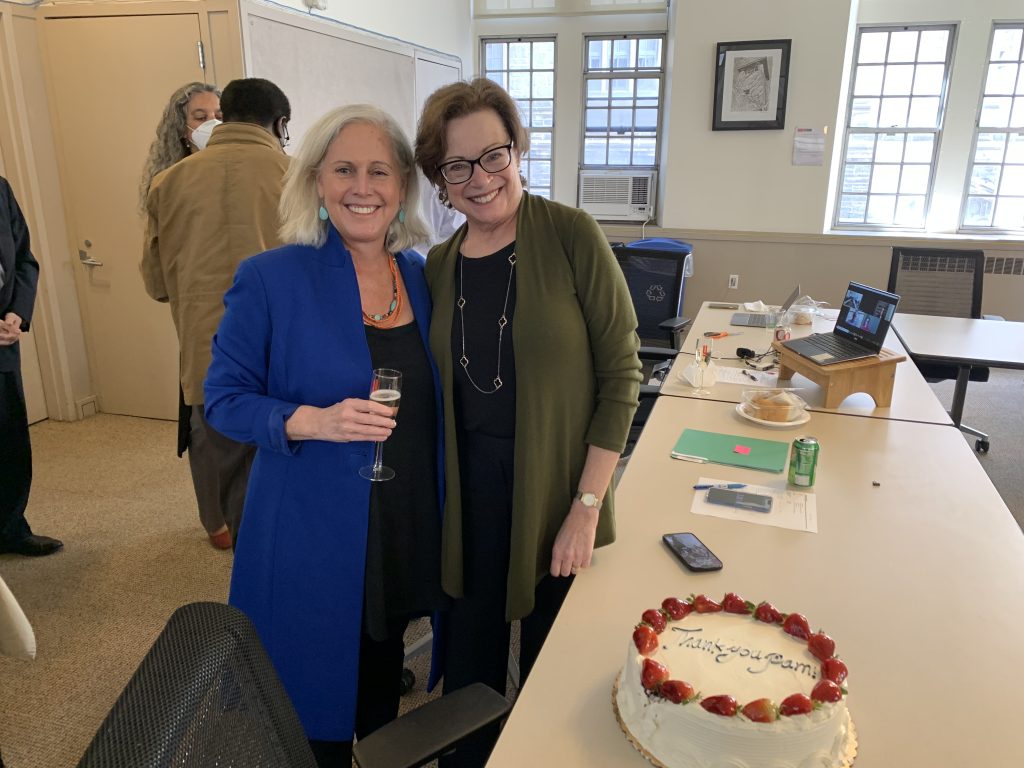
Publishing
In addition to her many published books Pam contributed to our shared conversations in the fields of PTCC with journal articles and book chapters, and innumerable public talks. The research she was sharing back in 2004 when I met her, of course became a journal article. And Pam has published in the journals that gives shape to our field, such as:
Journal of pastoral theology, Pastoral Psychology, Reflective Practice: Formation and Supervision in Ministry, and the American Journal of Pastoral Counseling.
Pam has also contributed to the wider field of practical theology in journal articles about homiletics and pastoral practice, such as the book she wrote with Michael Cooper-White, Exploring Practices of Ministry (Fortress, 2014).
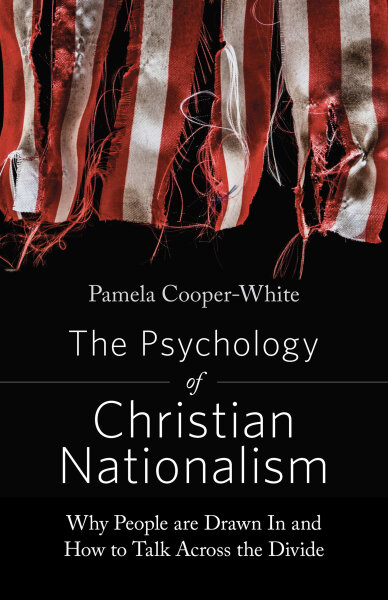 Her latest book The Psychology of Christian Nationalism (Fortress, 2022) brings together her pastoral concerns once again with depth psychology in a thoughtful analysis of the dynamics that shape Christian nationalism. And she doesn’t stop with analysis. Rather she makes a strong case for how to engage in listening and conversation across a very difficult cultural divide. She uses a system of red, yellow, and green lights to help readers assess when it is a good time to attempt conversation. This is the kind of writing that is the best sort of practical and pastoral theology.
Her latest book The Psychology of Christian Nationalism (Fortress, 2022) brings together her pastoral concerns once again with depth psychology in a thoughtful analysis of the dynamics that shape Christian nationalism. And she doesn’t stop with analysis. Rather she makes a strong case for how to engage in listening and conversation across a very difficult cultural divide. She uses a system of red, yellow, and green lights to help readers assess when it is a good time to attempt conversation. This is the kind of writing that is the best sort of practical and pastoral theology.
Editing and Reviewing
Pam is not only a prolific writer, she is also a powerhouse of editing and reviewing in the field. When Pam became the co-editor of the Journal of Pastoral theology (JPT) in (2007), she inherited a backlog. As I understand, it was a real mess. She was co-editor with Duane Bidwell for her final two years, and then she rotated off. Then I became co-editor with Duane Bidwell. So I heard a lot of stories about how pragmatic and deliberate and utterly devoted to the task Pam was a getting the job done. She caught up the entire backlog and put the JPT back on track with its publishing schedule.
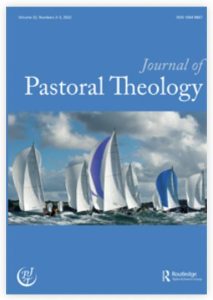 In the world of academic publishing, authors and editors alike can have a tendency of dragging their feet to turn around blind reviews or get revised and re-submitted articles completed. Pam brought her same energy and clarity and work ethic to the task of editing the journal of record for the Society of Pastoral Theology.
In the world of academic publishing, authors and editors alike can have a tendency of dragging their feet to turn around blind reviews or get revised and re-submitted articles completed. Pam brought her same energy and clarity and work ethic to the task of editing the journal of record for the Society of Pastoral Theology.
I also know that Pam has been generous in giving feedback and encouragement to her students in masters-level and doctoral programs, as well as her peers in pastoral and practical theology. I feel sure she’s given this kind of feedback in many places we will never know. Because that is the nature of blind reviews. In my own situation I sent a chapter from my first academic book, Anatomy of a Schism, to her, and she was generous in returning it with encouragement and feedback. That exchange leads me to one more contribution that I want to share.
Keeping depth psychology on the front burner
A part of what Pam encouraged in my work, and to which she encourages our entire field, is to remain engaged with depth psychology. She urges us to keep it on on the front burner of our work. In the two decades I’ve been part of the guild of pastoral theology (SPT) there seems to be an ever present and ongoing tussle on this matter. At one side there is a concern by people who worry about too much Freud and Jung and Klein and Winnicott and Kohut and Benjamin. In other words too much depth psychology is driving our field.
And on the other side, there is lament that somehow depth psychology is all but disappearing. Pam has been among the important voices who does not wish to limit the field’s conversation partners to depth or relational psychologies, Yet she is clearly committed to keeping those voices in the conversation.
This is yet one more important and vital contribution Pam makes to the PTCC field. For example, many CPE and pastoral counseling programs continue to teach Pam’s 2003 book Shared Wisdom: Use of the Self in Pastoral Care and Counseling. And Pam’s various books appear on many seminary syllabi in pastoral theology and care, helping pastoral practitioners learn to utilize counter/transference in their work.
Friendship
Perhaps it is a bit unfair. However, people who do the work of PTCC are often expected to be people others look to relationally. Pastoral theologians are the one sought out for connection, friendship, care and support. It’s not true in every case, but often it is. And one of Pam’s good contributions to the field is to have a sense of collegiality and friendship that she extends to most everyone. She also knows and exercises clear boundaries. And it does not mean she’s uncritical or unwilling to have a good academic argument. She’s all in for that!
But it means she is loyal and kind. I have certainly enjoyed her friendship and witnessed her willingness to invest in her colleagues in multiple ways. Thank you, Pam. You have been a leading light. And we are grateful.

